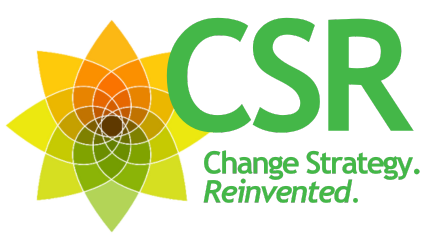This article, written by CSR Communications’ CEO, Nancy Murphy, was originally published in The Business Journals Leadership Trust.
Today’s middle managers face pressure from multiple directions.
They feel responsible to senior leaders while lacking the authority to make critical decisions. They’re tasked with implementing change initiatives they had no voice in developing. They must support direct reports through uncertainty while managing their own anxiety.
In general, they operate with less control and a narrower perspective than executives, but with similar expectations to deliver results.
The Middle Manager’s Impossible Position
At my company’s recent Next Big Thing Executive Forum, leaders from across sectors gathered to discuss what feels like an insurmountable challenge: the middle manager crisis. We’re well past the early warning signs of significant strain—if you have even one middle manager, you already have this problem.
The insights shared revealed a critical vulnerability in organizations across sectors: the people responsible for implementing change and supporting frontline staff are caught in an increasingly untenable position. One forum participant pointed out that manager overwhelm is partly work-related, but that all the change happening outside of work is making it even worse.
Whatever stress executives feel about their responsibilities, middle managers are likely to experience it a hundredfold. Why? They have less experience navigating upheaval, less control over decisions, and are squeezed between competing priorities from above and below.
Why Traditional Solutions Fall Short
Organizations typically respond to middle manager overwhelm with:
• New manager training: Often delivered only once upon promotion, rarely focused on change management, and quickly forgotten.
• Mentoring programs: While valuable, these can feel like one more obligation rather than a benefit.
• Technological solutions: Simply telling managers to “just use AI” without proper guidelines or training creates more frustration.
• Wellness perks: Gift cards and office yoga treat the symptoms, not the cause.
These approaches, while well-intentioned, fail to address the fundamental challenges managers face in today’s environment of constant change and disruption.
The Cost of Inaction
Failing to address middle manager overwhelm has serious consequences:
• Financial impact: The cost of incivility in the workplace (which increases under stress) is substantial.
• Failed change initiatives: When managers can’t effectively implement change, organizations waste resources on initiatives that never gain traction.
• Decreased productivity and morale, across all levels in the organization.
• Loss of critical support for junior staff, increasing anxiety throughout the organization.
• Senior leaders taking on more work as managers become unable to fulfill their responsibilities.
More Effective Approaches to Support Middle Managers
Forward-thinking organizations are implementing solutions that target the root causes of burnout and overwhelm:
1. Help Managers Prioritize.
When everything feels urgent, then everything seems like the number one priority. Help your managers discern what truly matters by:
• Maintaining consistent one-on-one meetings, especially when things get busy.
• Cascading clear priorities from senior leadership.
• Conducting more frequent informal check-ins to help recalibrate as conditions change.
2. Normalize Feelings Related to Uncertainty.
It’s normal to feel anxious, scattered, or overwhelmed during times of disruption. When managers feel they must project constant confidence, it compounds their stress. Create safe spaces for managers to express concerns without judgment.
3. Set Clear Expectations About Change.
Organizations need to explicitly communicate that strategies, priorities and messaging will shift as external conditions evolve. This isn’t indecisiveness—it’s adaptability and responsive leadership. One forum participant explained that it’s unfair to give false promises that nothing will change when people know everything from funding to the company mission is still up in the air.
4. Include Managers in Decision-Making.
When possible, engage middle managers in decision processes rather than simply asking them to implement decisions made without their input. This builds both their capacity and their commitment to change initiatives.
5. Communicate More Than You Think is Necessary.
During uncertain times, communicate more frequently, not less. One government leader who participated in our forum shared that over-communicating, even when you don’t have answers or clarity yet, is better than leaving managers to make assumptions or fill in the blanks with their own stories about what’s happening.
The Critical Balance: Speed and Discernment
Leaders navigating today’s environment need two seemingly contradictory capabilities: speed and discernment.
In a world where change happens overnight, organizations must move quickly. Waiting too long to respond can leave you irrelevant. However, speed without discernment is dangerous, leading to reactive decisions rather than strategic responses.
The leaders who will succeed are those who can help their managers develop both capabilities: moving quickly when needed while wisely discerning what truly matters.
The crisis of middle management won’t resolve itself. Organizations need intentional strategies to support these essential team members through disruptive times.
If your organization is grappling with how to better support and equip middle managers during times of disruption, let’s talk. CSR Communications partners with mission-driven organizations to strengthen internal communication, align leadership teams, and build the capacity to lead change from the middle. Contact us here.

